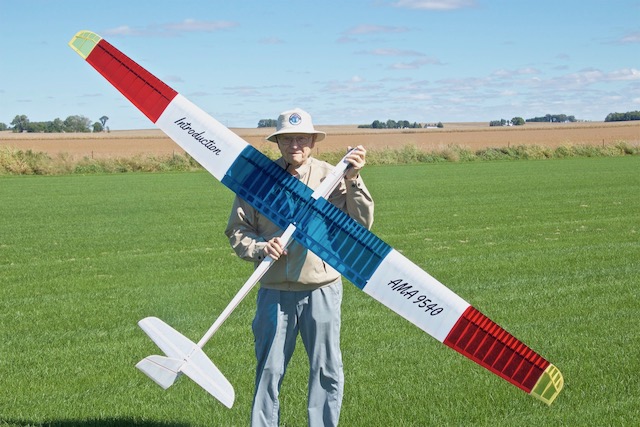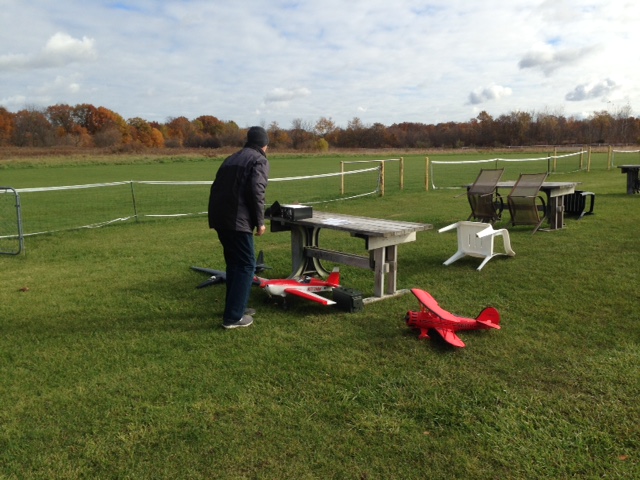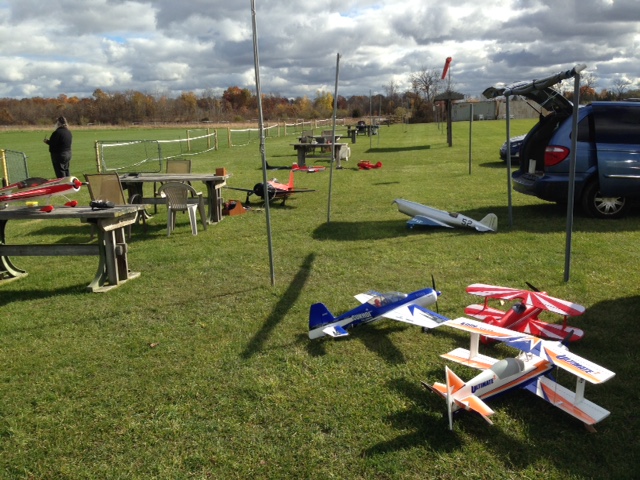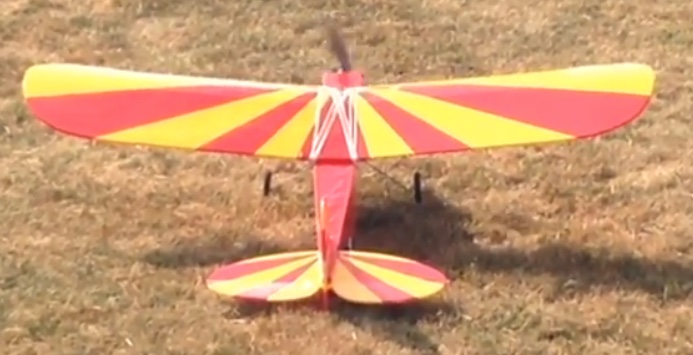 |
Flying High With Electric Power!
The Ampeer ON-LINE!
Fly the Future - Fly Electric! |
|---|
Site Table of Contents
| President: | Vice-President: | Secretary-Treasurer: |
| Ken Myers | Richard Utkan | Rick Sawicki |
| 1911 Bradshaw Ct. | 240 Cabinet | 5089 Ledgewood Ct. W. |
| Commerce Twp., MI 48390 | Milford, MI 48381 | Commerce Twp., MI 48382 |
| (248) 669-8124 | (248) 685-1705 | (2480 685-7056 |
 | ||
| Board of Directors: | Board of Directors: | Ampeer Editor |
| David Stacer | Arthur Deane | Ken Myers |
| 16575 Brooklane Blvd. | 21690 Bedford Dr. | 1911 Bradshaw Ct. |
| Northville, MI 48168 | Northville, MI 48167 | Commerce Twp., MI 48390 |
| (248) 924-2324 | (248) 348-2058 | (248) 669-8124 |
| EFO Meeting: Wednesday, Dec. 12 Time: 7:30 p.m.
Place: Ken Myers' house Everyone with an interest is WELCOME | ||
| A Request and a Very Strange Happening at Our Flying Field A request and information from John Zook. | Indoor Flying Season, 2018-2019, Southeast Michigan Dates and times for the two venues in our area |
| Some Help in Locating a Lost Plane Several Ampeer readers share ideas for lost plane trackers | Electric Drive Telemetry and LiPo Battery Failure Burkhard Erdlenbruch shares his testing and thoughts on this topic |
| The INTRODUCTION, a New Glider Plenny Bates shares his info on this glider and notes some of its flying characteristics | The EFO November Flying Meeting A report and photos of the November EFO flying meeting |
| More on the Puddle Masters Thrust Angle Joe Hass shares how his is set up | My Award Winning Flite Test Simple Cub Ken shares more info on this design |
From John Zook johnzook@frontier.com First, I have an Atlas outrunner and lost the spec sheet for it....gotta be somewhere, but durned if I know. Anyway it's a 4020-12, so if anyone in your group knows of this one, or where I can locate the tech specs, let me know. I plan to install this on a Sig Kadet Senior that I just started. Secondly, The Charlevoix BUFFS R/C club has lost its indoor flying venue this year due to a total rebuilding of the school the gymnasium was adjacent to. It is currently being used for storage while new construction is taking place. I have been a member of the Charlevoix BUFFS for over 20 years and this summer we had an incident that has never happened before. Due to the hot, dry weather up here, it appeared that grubs began hatching under the sod on our flying field. The local wildlife must have noticed this and soon we found our field damaged in a number of areas including directly off the south end of the runway. After calling some local critter control companies, it was determined that raccoons were the culprits....probably mama and her kits. The sod had been torn up so badly just off the south end of the runway that the only way to repair it is to remove the torn up sod and fill it all in with top soil. I have never seen this happen before and was quite taken aback at the amount of damage these critter can do. The club secretary, Dave Kendall supplied a game camera and came up with some photos of some nice bucks but no raccoons. Apparently they moved on probably because we laid down four bags of grub killer. Next year we're going to be proactive about this. Anyway this is what we have to contend with sometimes up north. Oh yes and my brother spotted a large wolf crossing the road ( US 31) south of Charlevoix. It's getting crowded up here. See ya,
Indoor Flying Season, 2018-2019, Southeast Michigan Tuesdays, October 30 through April 16, 10 a.m. - 1 p.m.
Ultimate Soccer Arenas
Single Flying Session - $10
All pilots MUST have proof of AMA Membership
Spectators Welcomed
Resister Online
Support your local hobby shop because they support us! Wednesdays, November 7 through April 24, 12:30 p.m. - 2:30 p.m. Legacy Center
Drop in Flying Session - $10 Spectators Welcomed and free There may be exceptions or changes around the holidays.
Return to "What's In This Issue" Some Help in Locating a Lost Plane
In the November 2018 Ampeer, Phil Pearce asked for some help in locating devices for finding downed RC models. Just this week, a thread opened on RC Groups titled, "Marco Polo lost plae tracker" (Sorry, that's the title KM) The standalone device can be found on Amazon. Shortly after putting the November 2018 Ampeer to bed, I remembered that Bruce Simpson of RC Model Reviews posted a video about using RSSI to locate a downed RC aircraft. The video is called, "Finding lost RC planes using telemetry" While trying to find Bruce's video, I ran across a couple of other videos on this topic. RC Quick Tips: Finding your lost model (RSSI method)
From Burkhard Erdlenbruch via email Hi Ken, I again found the new Ampeer issue ahead of publication, and just the first topic caught my eye. This is what I remembered right away. It is from the RC-Soar-the Blog, "Taranis at La Muela. Or how RSSI found my models." I don't know if it pertains to the special case at hand, but it's THE way to locate a model with modern 2.4GHz equipment. So again for what it's worth... Best wishes,
Hi Ken, Here are a couple of links to GPS based "lost model" locaters that are used by some Free Flight modelers. They both use a handheld receiver to "point" the direction and distance to the transmitter. Icare2 GPS Tracker Webpage
Best wishes,
You folks are just wonderful at helping others. I really, really like the Ampeer readers a lot. Thanks for all of your help, all of the time.
Electric Drive Telemetry and LiPo Battery Failure
We don't discharge - and even charge = modern LiPo batteries completely in order to give them a reasonable service life. We can afford that because their specific energy content (Watt-hours per ounce) is about four times that of the old NiCd batteries. While the charger reliably limits the charge, we may feel unsure about the actual discharge during flights, which can be quite different in their power demand after all. What helps is a telemetry amperage sensor that is able to add up any battery drain and subtract it from a preset capacity. Multiplex aptly calls this a "fuel gauge for the battery&quo. I for one limit charge to 4.15V per cell. That means about 3% less capacity than fully charged to 4.20V. Hence I have set 4850 (97%) instead of 5000mAh (100%) capacity for the telemetry discharge counter. The discharge warning level was initially set to 25% or 1250mAh to be warned in time to land the model before the safe 20% discharge limit (1000mAh) is reached. Now these are all nominal values, not necessarily real ones. It is not uncommon that even a new battery's real capacity is lower than specified. In any case, capacity lessens as the battery gets older, no matter if it's used or just stored. And it may lose capacity by maltreatment like deep discharge. Hence these telemetry parameters have to be adapted - after the first flights with a new battery, then regularly, after any mishap, and towards the end of the battery's service life. Incidentally, that could make it difficult to use several batteries in turn in the same model, but I don't do that. Besides, the higher the amperage drawn from the battery is, the lower is its real capacity. Again, it is not uncommon that nominal capacity is specified for only 1C. So a lower real capacity has to be set in telemetry to count down from, and this value should be adequate to an average flight's amperage. Otherwise, rather the discharge warning level could be different - higher for flights with high amperage load and lower for more leisurely flights. My flights are not that different, though. Beyond discharge count, there is even a fair chance to detect capacity deterioration or just variation in flight. The battery would drop voltage prematurely, so we may want a telemetry voltage sensor in addition. For a new battery with fresh cells, total voltage may be indicative enough of its health. But because some cells in a pack age faster than others, such a sensor should ideally (additionally) find the weakest cell and report its voltage. That seems to be useful when the battery gets old or worn out, and if there are substantially different flight regimes. With telemetry, we try to protect our delicate LiPo batteries and yet get the most out of them. But how does this work out in practice? Here's what I think is a typical example: Damage
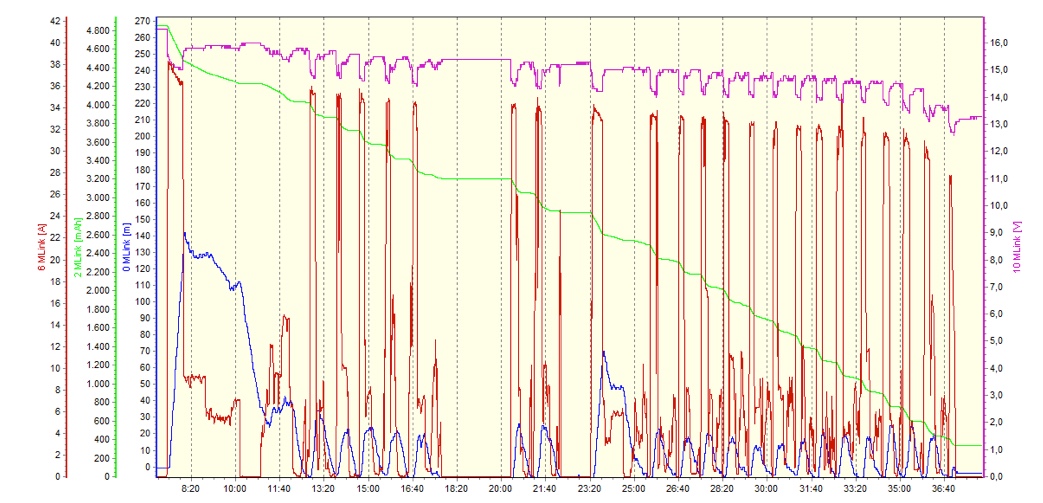 The peaks in the (red) amperage and (blue) altitude lines indicate traffic patterns. In the 23rd takeoff things went awry. The (magenta) voltage as well as the (red) amperage line show the battery's discharge curve quite well, I mean how voltage drops fast in the beginning, then only slowly, until it drops progressively in the end. This is a clear indication of my fault already since a LiPo battery should never be discharged that far. I missed the discharge warning for 1250mAh (25%) remaining charge at about 32:05, just at the end of a climb. Two take-offs later, the recommended 1000mAh (20%) discharge limit was under-run at 33:35. One more take-off later, the 4 x 3.4 = 13.6V low-voltage warning level was under-run at about 35:10. The safe 3.3V cell voltage limit was under-run at 36:00 in the next take-off, but yet the next landing was done at 36:50 without reaching the critical 3.2V cell voltage limit. Remaining charge was 590 mAh (11.8%) or 410mAh (8.2%), respectively. It's not that I'm just a scatterbrained geezer. I even managed to set up the telemetry correctly (and it worked correctly) but I messed up the voice output. The low-charge alarm was inadvertently set to permanent, meaning it was permanently spoken, and there were even other announcements interspersed. Hence the voice output was cluttered beyond recognition and I had to learn the hard way why restricting announcements to a minimum is a good idea. 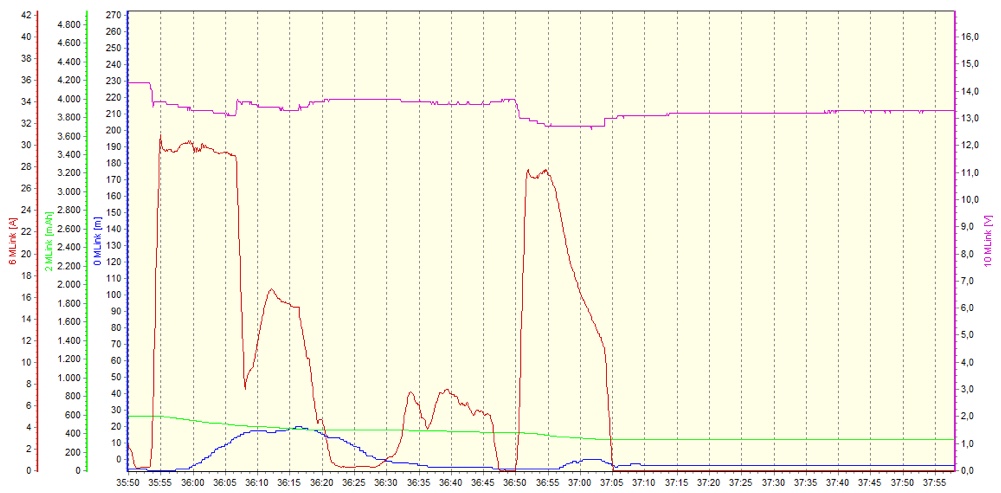 Still there was another safety feature: the ESC was set to low-voltage "power reduction". This feature is meant to save the battery and yet avoid a surprising dead-stick in case of low charge. Of course, it set in during the next take-off run (at 36:55) when full power was set. It reduced power continuously and just enough to keep voltage up, but that made a proper climb after take-off impossible. Finally I cut power (the rest of it) when the model touched a bush top (at 37:04). There was still 335mAh (6.7%) charge left. Obviously, the low-voltage level is preset (not adjustable) to the critical 3.2V per cell, that is 12.8V for the 4s battery. This level was slightly under-run to 12.7V and even 126 V for a split-second so average cell voltage was 3.175V or 3.15V, respectively - too low. Without any load (amperage), it recovered to only 3.325V (13.3V total, see diagram) whereas it should have reached 3.75 V again, minimum idle voltage of a healthy battery. Obviously, even the small shortfall in voltage and the associated deep discharge hurt the battery. It swell thereafter and had noticeably less capacity. Failure In September 2018, there was even a cell-voltage sensor in my Senior Telemaster Plus. I had raised the charge warning level to 1500mAh (30%) because the battery had lost even more capacity to age. The following diagram shows the battery's final flight. The 4s-battery voltage (magenta) and cell voltage (blue) axes are scaled 4:1 so both lines are overlaid. Both sensors have 0.1V resolution so the cell-voltage line has four times bigger steps. The two lines coincide fairly well until about 21:00 when a fatal incidence occurred: cell failure. 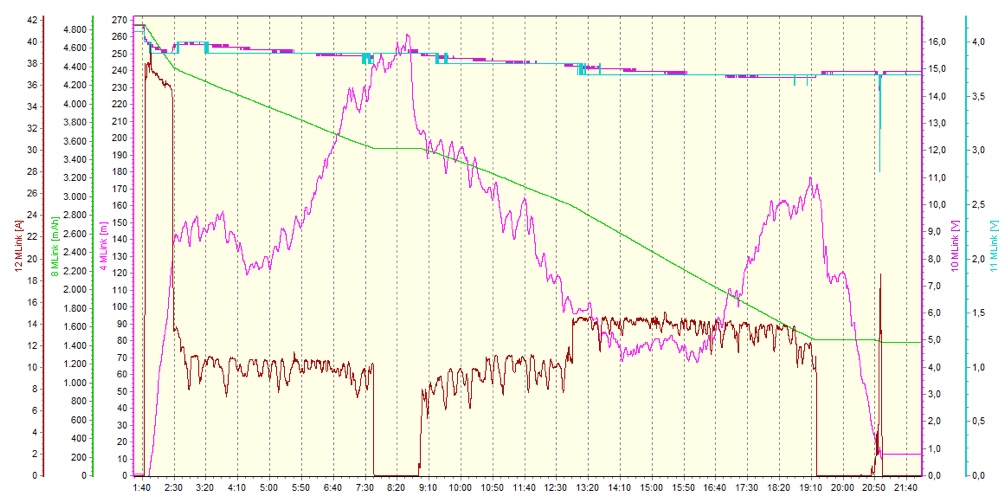 The (green) charge line is still rather high (nearly 30% remaining nominally) at the time of incidence. Altitude (pink) and amperage (brown) lines show an initial full-power climb to thermal altitude (at 2:30). Then, more or less (or even zero) power was set while the airplane loitered in thermals and downdrafts. Power was cut (at 19:20) after the 1500 mAh (30%) low-charge warning had been announced. In retrospect (looking at the diagram), there was even a sign of the coming cell failure: There are two short drops of cell voltage (blue, at 18:42 and 19:04), but only by 0.1V to still 3.6V well above the 3.4V warning level. Battery voltage (magenta) didn't even drop and recovered by 0.2V after power had been cut. One cell was about to fail and just the fact that it dropped voltage (not the amount) hinted at that. Amperage dropped permanently even after the first short voltage drop. 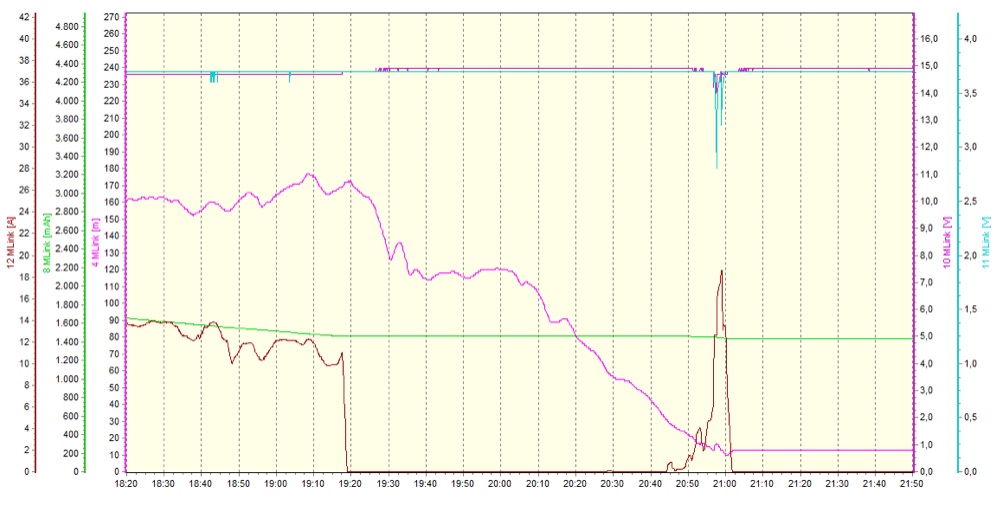 But there was no way for me to notice that. This detail diagram shows no clear amperage drop from 18:45 on - like the full diagram above - but just the usual fluctuations at a slightly lower level. And I had expected that the battery would recuperate while power was cut. But there was hardly any power when needed to fly over a row of trees, and I rather cut power when the airplane was blown by winds gusting up to 15mph or even 20 mph, and then sunk into a tree. At least that's what I think I did; I have no clear recollection because I was so stunned. Anyway, battery voltage stayed well above the ESC's 12.8V power-reduction trigger level. 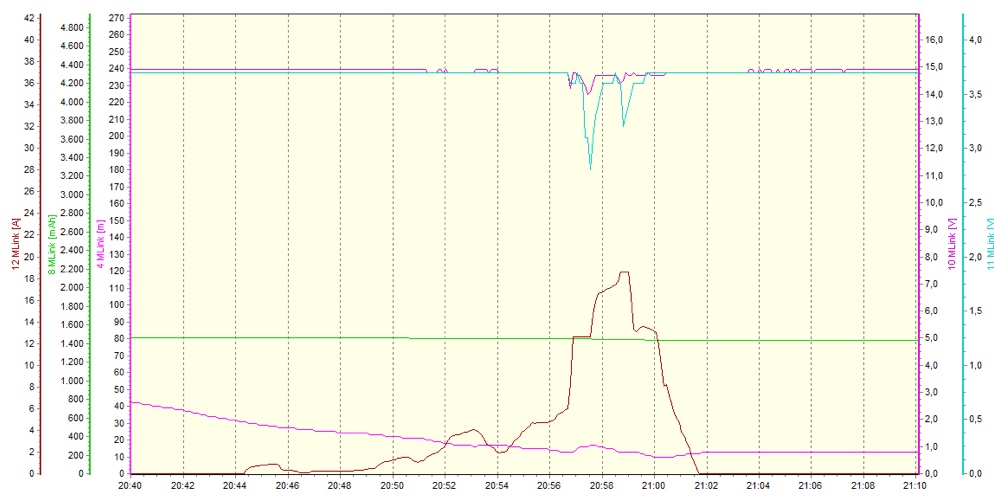 It happened in a quite short time, even seen in the 30 seconds time frame from 20:40 to 21:10 shown in this detail diagram. When some amperage was drawn from the battery (at about 20:57), its voltage dropped from 14.8V to 14.0V (by 0.8V) while the lowest cell voltage dropped from 3.7V to 2.8V - by 0.9V. The voltage drops are not equal (mind the 0.1V resolution) and not exactly synchronous either. Oddly enough, battery voltage recovered to 14.9V and even the bad cell recovered to 3.7V what is still close to minimum idle voltage (3.75V). But the charge left in the battery (green) was nominally 1436mAh (28.7%), substantially more than 1000mAh (20%) when the battery was new - it had lost capacity. It had been used for less than 100 flights yet it was 3-1/2 years old and had suffered the deep discharge two years ago. The loss of capacity had been noticeable when re-charging it. Comparison
The first flight lasted 29:45 (1785 seconds) and 4515mAh were used up; the second flight 19:20 (1160 seconds) and 3415mAh. That were 2.53mAh/s and 2.94mAh/s, respectively, so battery drain in the first flight was 86% of that in the second one. If idle times (4:35 and 2:30, respectively) are excluded (what the throttle timer does), the battery drains were 2.99mAh/s and 3.38mAh/s, respectively. Their ratio is now even 88%. The first flight's lower battery drain might be due to the quite big amount of landing approaches. Then again, the second flight's higher battery drain might be due to the quite big amount of downdrafts. Either way, differences in battery drain seem to be just random. Conclusions
Is the ESC's low-voltage power reduction a substitute? To be one, it would have to set in early, at 3.3V at least, and then it would need voice output to alert me of the coming power reduction - that's what telemetry does already. Otherwise, it enforces power reduction and thus takes away the option of sacrificing the battery to keep the model undamaged. I prefer telemetry and don't see it as a complement, either. Is telemetry worth it? Well yes, it has its value and it's not really expensive, but that seems to be a pointless question nowadays. If I'd be asked if I need my smartphone I'd say actually not - I just have it. What if there's no way to have telemetry in a model for some reason? The traditional throttle timer seems to be still good enough for all practical purposes. Battery drain is surprisingly constant with my model, nearly independent of the course of flight. Just a bit more safety margin would be needed compared to telemetry, maybe 15% at most. This exemplary investigation of ill-fated flights was possible because a recorder in the airplane logged all telemetry data ten times a second and a GPS's position data twice a second. Lacking only servo movements, this is an almost complete "black box" system for models. But after thinking about telemetry, I ended up thinking about LiPo batteries. And since I never used LiFePo (A123) batteries, I'm now wondering: Is LiPo's energy content per weight actually not much better than LiFePo's? After all, the effectively usable part of LiPo's nominal capacity is surprisingly small. A typical LiFePo battery has 2.95 Wh/oz and a comparable LiPo has 3.38 Wh/oz - nominally only 77% to 100%. But what if LiFePo would tolerate higher charge, deeper discharge, and yet age slower than LiPo - would the disparity be smaller in actual fact, 94%:100% by way of example? Someone? Anyone? KM The INTRODUCTION, a New Glider
I just completed a new electric sailplane. It is available as a laser cut kit from Germany. It has very nice wood and the laser cutting the best I have seen. They seemed to set the power to match the thickness and density of the wood. There is a carbon leading edge of the wing. It's a rod of about 0.120", and there are carbon tubular wing spars. Each wing section has a different diameter non-tapered spar. They recommend regular UltraCoat for the wing center section and UC lite for the outer sections. I used lite for everything except the fuselage. I extended the tips (yellow) to get a W.S. of 118.36". The transparent white really lights up in conditions that do not favor the dark colors. Wingspan: 3006 mm (118.35")
Motor Hacker: A20-22L about 190W on a 3S 850mAh battery It is not intended for winds over 10 MPH but depends on turbulence. Nor will it tolerate a "spear" landing but is it every good in light air. The wing section is thin enough that it will mover faster than you might think. There are two basic models, the Introduction (with flaps & motor) and the Inside, which is the same except add 4 ailerons. Cost: US $163 and air postage about $55. It seems you can ship any number of kits for that price. I know of two orders from Iowa for a total of 20 models. All reports are glowing. The graphics are by Callie Graphics. And in a follow-up Email: My flying skills are far from good, but last Thursday, the second day of cool and damp, I took the Introduction up one time to about 350-400 feet. I soon got a little bump and turned the timer on. The plane did not drift much, 2-3 MPH wind, and gained not over 3-5 feet per turn. After about 20 min in the same light thermal I came home. As I was getting ready to land with about 50' altitude hit a light bump and followed it downwind about 600 too 700 feet with very little altitude gain. I returned and landed with time on clock of 31 minutes and 50 seconds. I only worked two thermals and, aside from the powered launch total altitude, gained less than 100-200 feet. I think if it was 9 oz. heavier Joe Werts himself could not have stayed up.. No question that it is a great light air ship. Jim Porter has one with a bit more power and he expects to get one minute of flight for every second of power climb. He can find thermals with a paving brick. Plenny Bates
The EFO November Flying Meeting The EFO November flying meeting was held on Saturday, Nov. 3, 2018. Fall had definitely fallen over southeastern Michigan. The sky was mostly cloudy most of the time. The winds were in the 10 mph range with some quite significant gusts. The air temperature never rose past 45 degrees F. What a great day it turned out to be!!! 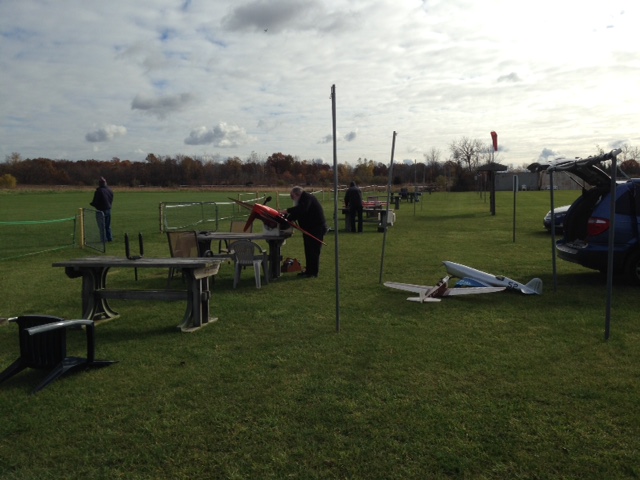
Keith setting up his Bearcat above and ready below Keith's Crosby and Klemm in the previous photo 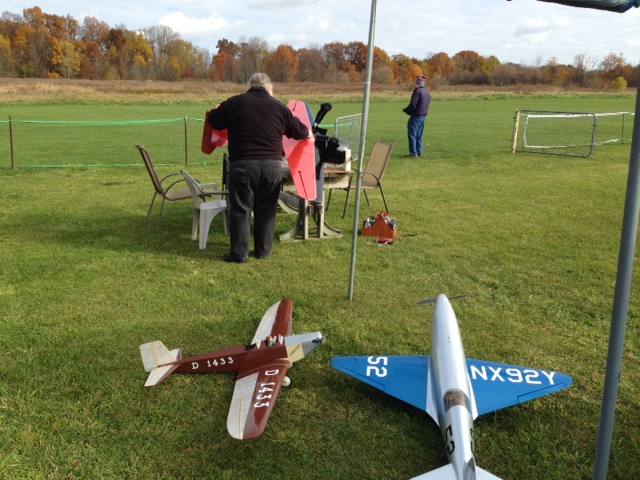 The attendance was very good for such a poor flying day and everyone flew what they brought. The wind did play 'hob' with a few landings, but no one really took home a broken plane, unless you mean Owen, who only 'removed' the landing gear on his Multiplex/Hitec Extra. 
Tom Bacsanyi Readies His Tucano
The following photos show Dave Stacer getting in an early flight on his flying wing. 
Some of the planes Rick Sawicki brought with Keith flying in the background and Keith's big, fast, Bearcat. 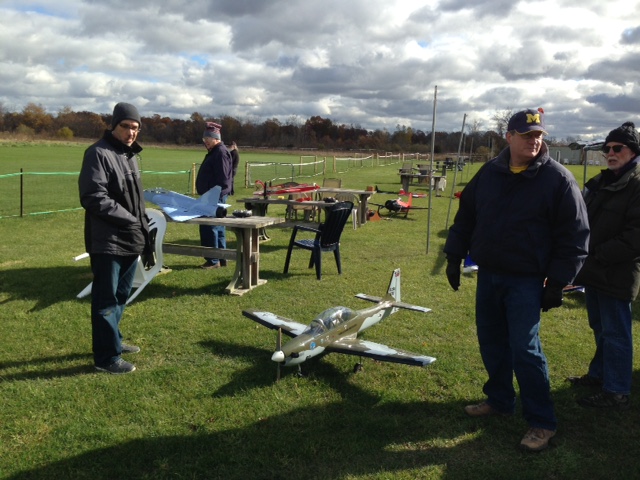 Owen, Tom, Keith (flying), Dave and Ron Sherwood all dressed appropriately for the weather as shown in the photos as well. 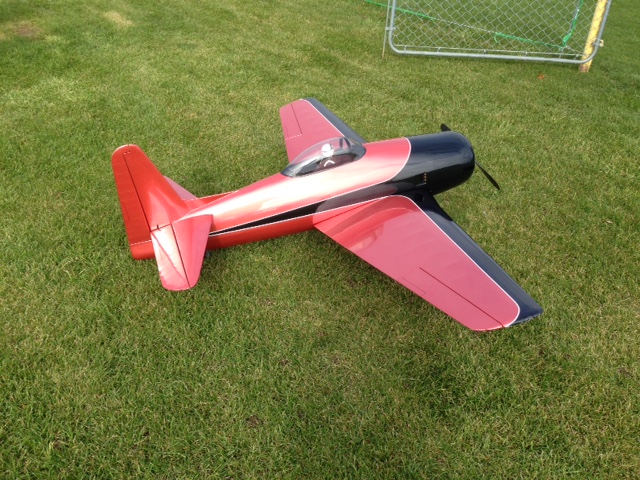
A good look at Keith Shaw's great Bearcat! More on the Puddle Masters Thrust Angle
In the November 2018 Ampeer, Walt Thyng asked about the thrust angle for the Puddle Master amphibian. Joe Hass sent along this information: I am still flying my Puddlemaster that I reviewed in RC Report a L O N G time ago. Astro 05 motor is now married to a Castle brushed ESC. Still using a separate receiver battery because I need the weight in the nose. Now using a 3 cell 2200mAh LiPo. It flies forever. My setup is entirely stock. Motor has no up / down / right / left thrust. What your writer noted is what I would expect. The motor is well above the CG. It is simply rotating on the CG. There are 2 things that make this all work flying off water. Advancing the throttle slowly on water will cause the fuselage to rotate backward because of the shape of the hull while the high thrust line will cause it to rotate forward. Because of the shape of the hull the aircraft points down a bit while sitting on the ground. On snow he would probably have to get going a bit faster to get the elevator working to rotate for take off. Hope that helps.
My Award Winning Flite Test Simple Cub
My version of the Flite Test Simple Cub Taking Off on Another Successful Mission. It is covered with Econokote, but that is Dollar Tree Foam Board underneath. I've mentioned in the Ampeer that my version of the Flite Test Simple Cub had some teething problems, which I was able to resolve. I plan on doing a whole article about the problems I found and how I changed the design to better suit MY desires for this plane. During this process, I also kept track of other folks problems and questions regarding this plane. I frequently checked the Flite Test forum regarding this plane. I have also kept a log of YouTube videos regarding this plane. The log includes my comments and link to the appropriate YouTube videos. I hope to have more useful information on this plane and the modifications that I made to it available soon. To Reach Ken Myers, you can land mail to the address at the top of the page. My E-mail address is: KMyersEFO@theampeer.org |
